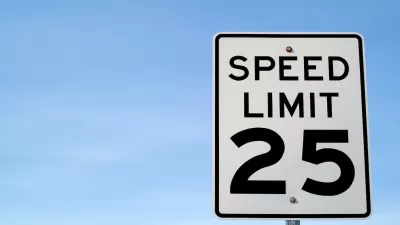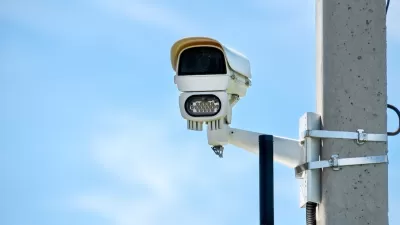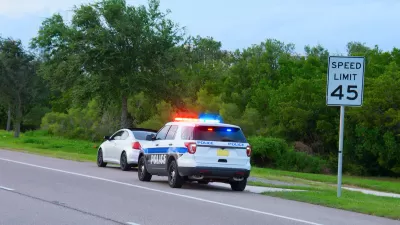Without additional changes to roadway design, lower speed limits only slightly reduce driving speeds.

Lowering posted speed limits has only a small impact on how fast people drive, according to a study from the University of Minnesota,
As Tim Harlow reports in The Minnesota Star Tribune, a drop in speed limits on residential streets in St. Louis Park led to a 1- to 2-mile-per-hour speed reduction across the city.
Studies show there is little change in speed patterns after a lower speed limit is posted. Drivers are much more influenced by changes to the roadway, its environment and conditions, the Minnesota Department of Transportation said.
According to Gary Davis, a professor in the Civil, Environmental and Geo-Engineering Department at the University of Minnesota, “many drivers have had the habit of going 30 mph on city streets for so long before the speed limit changed, and that it can take time and effort to change behavior.”
FULL STORY: Do lower speed limits on city streets actually slow down drivers?

Manufactured Crisis: Losing the Nation’s Largest Source of Unsubsidized Affordable Housing
Manufactured housing communities have long been an affordable housing option for millions of people living in the U.S., but that affordability is disappearing rapidly. How did we get here?

Americans May Be Stuck — But Why?
Americans are moving a lot less than they once did, and that is a problem. While Yoni Applebaum, in his highly-publicized article Stuck, gets the reasons badly wrong, it's still important to ask: why are we moving so much less than before?

Using Old Oil and Gas Wells for Green Energy Storage
Penn State researchers have found that repurposing abandoned oil and gas wells for geothermal-assisted compressed-air energy storage can boost efficiency, reduce environmental risks, and support clean energy and job transitions.

Updating LA’s Tree Rules Could Bring More Shade to Underserved Neighborhoods
A new USC study finds that relaxing Los Angeles’ outdated tree planting guidelines could significantly expand urban tree canopy and reduce shade disparities in lower-income neighborhoods, though infrastructure investments are also needed.

California's Canal Solar Projects Aim to Conserve Resources and Expand Clean Energy
California’s Project Nexus has begun generating electricity from solar panels installed over irrigation canals, with researchers and state agencies exploring statewide expansion to conserve water and boost clean energy production.

HHS Staff Cuts Gut Energy Assistance Program
The full staff of a federal program that distributes heating and cooling assistance for low-income families was laid off, jeopardizing the program’s operations.
Urban Design for Planners 1: Software Tools
This six-course series explores essential urban design concepts using open source software and equips planners with the tools they need to participate fully in the urban design process.
Planning for Universal Design
Learn the tools for implementing Universal Design in planning regulations.
Heyer Gruel & Associates PA
City of Moreno Valley
Institute for Housing and Urban Development Studies (IHS)
City of Grandview
Harvard GSD Executive Education
Salt Lake City
NYU Wagner Graduate School of Public Service
City of Cambridge, Maryland





























